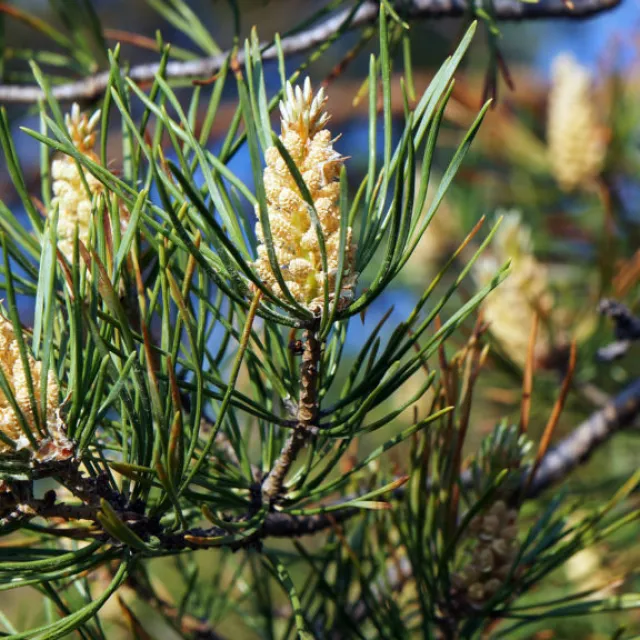Give before midnight on July 31 to double your impact where trees need us most. CHOOSE A PROJECT
Pinus strobus
Eastern white pine trees were among the first trees colonists discovered when they first came to the country.
Hundreds of miles of eastern white pine once lined the Hudson River. It was one of the most popular evergreens that blanketed the east coast. These old giants reached as high as 200 feet and extended nearly 40 feet around.

Pinus strobus
The Fight for Independence
White pines like those old giants are hard to find these days. Native white pine trees were popular to use as masts for naval sail ships. Records show that almost every year after 1653 England received white pines from the colonies. By 1691, their disappearance in the American landscape began to show. Popularity of the eastern white pine led to King George III of England passing a law which restricted any white pine tree with a 24-inch diameter or more for exclusive use by the British navy.
The law was the first in a restrictive series known as the “broad arrow” acts — named after the broad arrow mark engraved on trees that were restricted to the king’s men. The broad arrow act was one of many acts American colonists disapproved of and inspired them to seek independence from Britain. With a growing resentment towards the King and his ruling for top white pines, the broad arrow act helped spark the Revolutionary War. In fact, the first flag of the revolutionary forces had a white pine as its emblem.

Pinus strobus
New Beginnings
After gaining independence from Britain, America now had an abundance of white pine stands for their own use. White pine trees helped grow the urban landscape, constructing homes, buildings, and masts for ships that were used for trade with the rest of the world. While the virgin stands that once covered the eastern United States are gone, the species is still present in forests and parks. The oldest known eastern white pine lives in Nelson Swamp Unique Area of Madison County, New York and is estimated to be 450 years old.
In its natural range, eastern white pine is one of the most adaptable species in the forest. Although the tree’s attractive form is appealing for urban settings, it comes with caution, like many trees. Eastern white pine is sensitive to air pollution. It isn’t well suited for industrial areas or heavily traveled streets. It also susceptible to white pine weevil, blister rust, and fire. If you have a white pine, be sure to monitor for any suspicious growth. When properly planted and cared for, eastern white pines add grace and beauty to the surrounding landscape.


